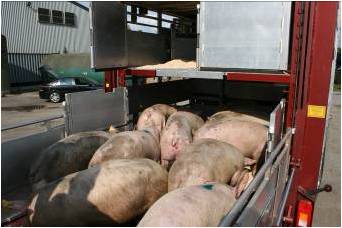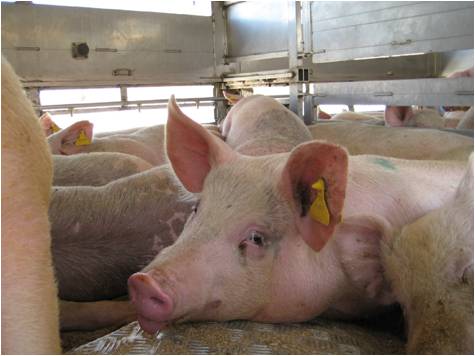First Class Transport for Animals
Published on 19 July 2011 in Food, health and wellbeing
Research by SRUC (formerly SAC) and collaborators has formed the basis for improvements in the design and operation of livestock transport vehicles and improved transport practices. It has also provided the sound scientific basis for improved transport legislation. This has increased standards of animal welfare and production efficiency in the livestock transport industry and resulted in more relevant and effective regulations.

Key Challenges
The welfare of animals in transit is a major public and political concern. The emotive nature of the issues means it is especially important that welfare is assessed in a scientifically sound and objective way. It is also vital that we gain a full picture of the impact of transport on animals in order to provide practical solutions to the issues involved. This will ensure high standards of welfare in transport that are compatible with sustainable and efficient production.

Key Benefits
Globally, 6.5 million cattle, sheep, pigs and poultry are slaughtered every hour. The vast majority are transported to centralised facilities for slaughter. Many young or breeding animals are transported from sites of birth or hatching to distant locations for finishing and breeding programmes.
Many other animals are routinely transported for purposes of sport, recreation, military activities and domestic use. Animals may be transported by road, sea, air and rail and journeys can last from a few minutes to many hours, days or even weeks in the case of long sea voyages. The stress factors to which animals are exposed in transit may compromise their welfare and health and result in poorer production and increased losses and waste.
SRUC’s animal transport research programme has made major international contributions to improved animal welfare, vehicle design, codes of practice and legislation.
SRUC’s animal transport research programme has made major contributions to improved animal welfare, vehicle design, codes of practice and legislation. The use of basic response modelling and integration of approaches from laboratory and climate chamber based studies and model evaluation and validation under commercial conditions was central to the success of this work. The studies resulted in the development of the Concept 2000 poultry transporter. This was the foundation of the development of fan ventilated animal transporters and the associated legislative requirements. The work has had an important influence upon European (e.g. EC 1/2005) and national legislation relating to animal transportation and has influenced commercial practice in a positive way, improving both animal welfare and production efficiency by reducing losses and improving product quality in meat animals.
The maintenance of the key staff, resources, laboratory, skills and experience facilitated by the Scottish Government’s funding of the SRUC Animal Behaviour and Welfare team ensures the continuity of the on-going programme and that future funding and research proposals both within the UK and across Europe and the rest of the world will be successful.


Comments or Questions
Related Websites
Our Partners
SRUC’s main partners are the Roslin Institute, Silsoe Research Institute. Many other national and international collaborators have been involved including the University of Zaragoza Veterinary School and Madrid Politecnica University, the University of Saskatchewan, Teagasc, Ireland, the University of Bristol and the University of Edinburgh and the Irish Equine Centre.
Find Out More
For more information contact Professor Malcolm Mitchell, Malcolm.Mitchell@sruc.ac.ukAuthor
Professor Malcolm Mitchell Malcolm.Mitchell@sruc.ac.uk





